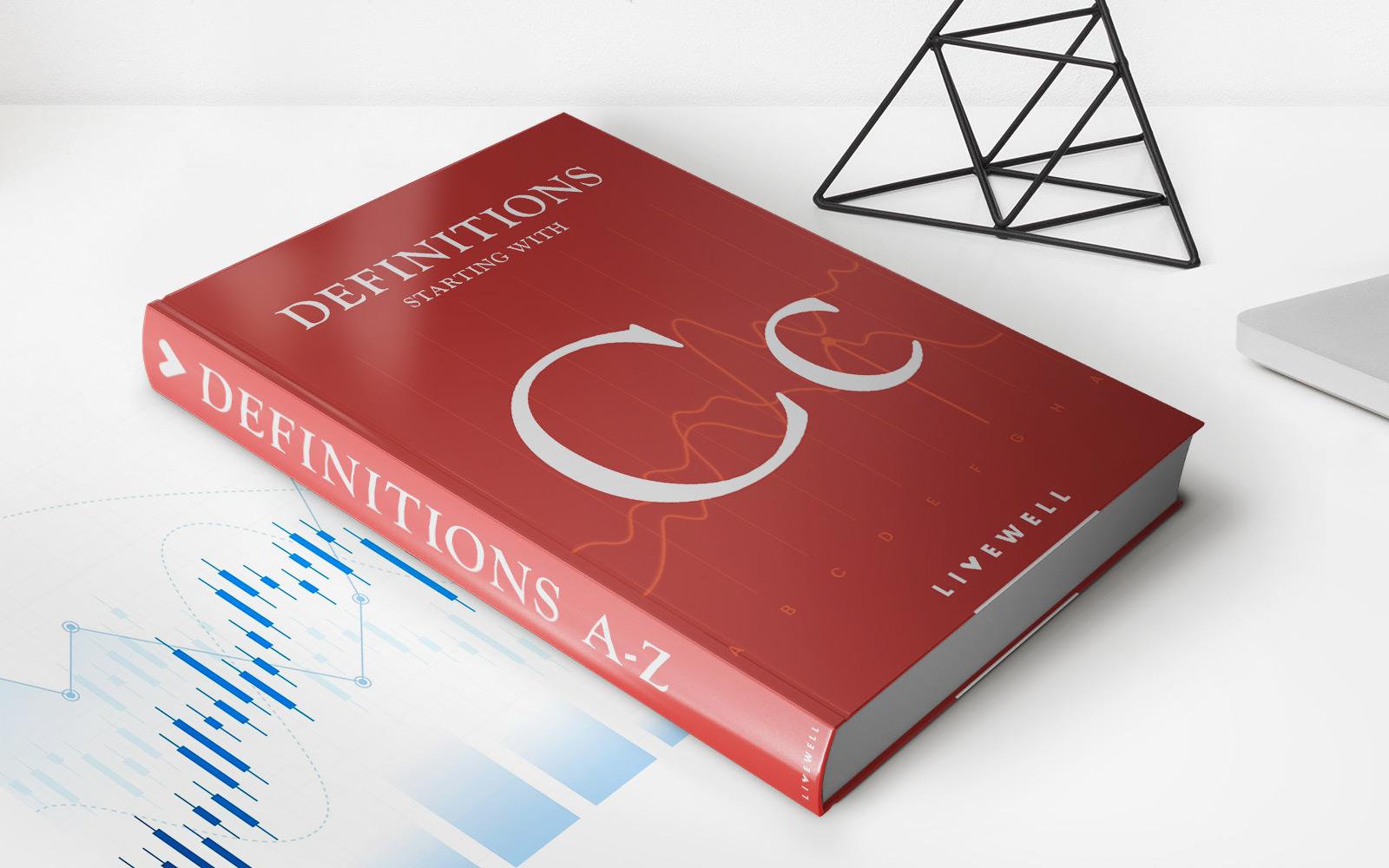

Finance
DTI Or Credit Utilization, Which Is Better?
Published: March 6, 2024
Learn the impact of DTI and credit utilization on your finances. Discover which one is better for your financial health and how to manage them effectively. Gain insights to make informed decisions.
(Many of the links in this article redirect to a specific reviewed product. Your purchase of these products through affiliate links helps to generate commission for LiveWell, at no extra cost. Learn more)
Table of Contents
Introduction
Understanding the Balance: DTI vs. Credit Utilization
When it comes to managing your finances and maintaining a healthy credit profile, understanding the intricate factors that influence your credit score is crucial. Two key components that play a significant role in this regard are Debt-to-Income (DTI) ratio and Credit Utilization. These metrics are fundamental in assessing an individual's financial stability and creditworthiness, and they are often considered by lenders when evaluating loan applications.
In this comprehensive guide, we will delve into the nuances of DTI and Credit Utilization, exploring their impact on credit scores and shedding light on which factor holds greater importance in various financial scenarios. By gaining a deeper understanding of these concepts, you will be better equipped to make informed decisions regarding your financial health and credit management strategies.
Throughout this article, we will compare and contrast DTI and Credit Utilization, highlighting their distinct roles and implications. Additionally, we will discuss the factors that should be taken into consideration when determining which metric holds more weight in specific situations. Whether you are a seasoned investor, a first-time homebuyer, or someone looking to improve their credit standing, this exploration of DTI and Credit Utilization will provide valuable insights to guide your financial endeavors.
Join us as we navigate the intricate landscape of personal finance and credit management, unraveling the complexities of DTI and Credit Utilization to empower you with the knowledge needed to make sound financial decisions. Let's embark on this enlightening journey to decipher the intricacies of these pivotal credit factors and unravel the age-old question: DTI or Credit Utilization – which holds greater sway in shaping your credit destiny?
Understanding DTI and Credit Utilization
Debt-to-Income (DTI) ratio is a financial metric that compares an individual’s monthly debt payments to their gross monthly income. This ratio provides insight into an individual’s ability to manage their existing debt obligations in relation to their income. Lenders often use DTI as a key factor when assessing a borrower’s capacity to take on additional debt, such as a mortgage or a car loan.
Credit Utilization, on the other hand, refers to the percentage of available credit that a borrower is currently using. This metric is particularly relevant in the context of credit cards and revolving lines of credit. A lower credit utilization ratio is generally seen as favorable, as it indicates that the individual is not overly reliant on credit and is managing their existing credit lines responsibly.
Both DTI and Credit Utilization are pivotal in evaluating an individual’s financial health and creditworthiness. While DTI offers a comprehensive view of how existing debt aligns with income, Credit Utilization provides insights into how responsibly an individual manages their available credit. Understanding these metrics is essential for anyone seeking to maintain a strong credit profile and make informed financial decisions.
As we navigate the realm of personal finance, it becomes evident that DTI and Credit Utilization serve as barometers of financial prudence and responsibility. These metrics not only impact credit scores but also influence lending decisions and financial opportunities. By comprehending the significance of DTI and Credit Utilization, individuals can proactively manage their finances and work towards achieving a robust credit standing.
Impact on Credit Score
The impact of Debt-to-Income (DTI) ratio and Credit Utilization on an individual’s credit score is profound, shaping their overall creditworthiness and financial standing. Credit scoring models, such as FICO and VantageScore, consider these factors when calculating credit scores, making it imperative for individuals to comprehend their significance.
DTI plays a crucial role in assessing creditworthiness, as it reflects the balance between income and debt obligations. A lower DTI ratio is generally indicative of a healthier financial position, signaling to lenders that an individual has sufficient income to manage their existing debts responsibly. Consequently, a favorable DTI ratio can positively influence credit scores, portraying the individual as a less risky borrower.
Credit Utilization also holds considerable weight in credit score calculations, particularly in the context of revolving credit accounts. Maintaining a low credit utilization ratio, ideally below 30%, demonstrates prudent credit management and responsible usage of available credit. This, in turn, can bolster credit scores, as it signifies that the individual is not overly reliant on credit and is effectively managing their borrowing capacity.
It is important to note that both DTI and Credit Utilization can significantly impact credit scores, albeit in different ways. While DTI reflects the relationship between income and debt, Credit Utilization showcases how effectively an individual manages their available credit. Understanding the nuances of these metrics and their influence on credit scores empowers individuals to take proactive steps towards enhancing their creditworthiness and overall financial health.
As we unravel the intricacies of credit scoring, it becomes evident that maintaining a balanced DTI ratio and prudent Credit Utilization are pivotal in securing a favorable credit standing. By recognizing the impact of these factors on credit scores, individuals can navigate their financial journey with a heightened awareness of the steps needed to cultivate a robust credit profile.
DTI vs. Credit Utilization
When comparing Debt-to-Income (DTI) ratio and Credit Utilization, it is essential to recognize their distinct roles in assessing an individual’s financial health and creditworthiness. While both metrics hold significance in credit evaluations, they operate in different spheres, offering unique insights into an individual’s financial habits and capacity to manage debt and credit responsibly.
DTI primarily reflects the relationship between an individual’s income and existing debt obligations. It serves as a measure of financial prudence, indicating how well an individual can manage their debt load in proportion to their income. Lenders often scrutinize DTI when evaluating loan applications, as it provides an overarching view of an individual’s ability to take on additional debt while meeting existing financial commitments.
Credit Utilization, on the other hand, pertains to the utilization of available credit, particularly in the context of credit cards and revolving lines of credit. This metric showcases how responsibly an individual manages their borrowing capacity and the extent to which they rely on credit for their financial transactions. A lower Credit Utilization ratio is generally perceived positively, as it signifies prudent credit management and a reduced reliance on borrowed funds.
While DTI and Credit Utilization are distinct metrics, they both contribute to shaping an individual’s credit profile. However, their impact on credit scores and lending decisions may vary. DTI offers a comprehensive view of an individual’s financial stability and capacity to manage debt, whereas Credit Utilization provides insights into their credit management practices and borrowing behavior.
Understanding the interplay between DTI and Credit Utilization is crucial for individuals seeking to fortify their credit standing and make informed financial decisions. By recognizing the nuanced differences between these metrics, individuals can adopt proactive measures to optimize both their DTI ratio and Credit Utilization, ultimately enhancing their creditworthiness and financial well-being.
Factors to Consider
When evaluating the significance of Debt-to-Income (DTI) ratio and Credit Utilization, several key factors come into play, influencing their relative importance in different financial scenarios. Understanding these factors is crucial for individuals aiming to optimize their credit standing and make informed decisions regarding their borrowing and credit management strategies.
Loan Applications: When applying for a mortgage, auto loan, or personal loan, lenders typically scrutinize DTI as a pivotal factor in the approval process. A lower DTI ratio signals to lenders that an individual has a healthier balance between income and debt, increasing the likelihood of loan approval and favorable terms.
Credit Card Management: Credit Utilization holds particular relevance in the realm of credit cards. Individuals aiming to maintain a strong credit profile should strive to keep their Credit Utilization ratio low, ideally below 30% of their available credit limit. Responsible credit card management, including timely payments and prudent utilization of available credit, can positively impact credit scores.
Overall Financial Health: DTI offers a comprehensive view of an individual’s financial stability, reflecting their ability to manage existing debt obligations in relation to their income. A balanced DTI ratio indicates prudent financial management and may contribute to a positive credit assessment by lenders.
Credit Score Impact: Both DTI and Credit Utilization play a role in shaping credit scores. While DTI reflects an individual’s capacity to manage debt in relation to income, Credit Utilization showcases their responsible usage of available credit. Understanding how these metrics influence credit scores is essential for individuals seeking to bolster their creditworthiness.
Long-Term Financial Planning: When mapping out long-term financial goals, individuals should consider the impact of DTI and Credit Utilization on their overall financial well-being. Maintaining a healthy balance between income, debt, and credit utilization can pave the way for improved financial prospects and enhanced credit opportunities in the future.
By taking these factors into account, individuals can gain a holistic understanding of the roles played by DTI and Credit Utilization in shaping their financial trajectory. Whether seeking a loan, managing credit cards, or striving to fortify their credit profile, considering these factors empowers individuals to make informed decisions aligned with their financial objectives.
Conclusion
As we navigate the intricate landscape of personal finance and credit management, the juxtaposition of Debt-to-Income (DTI) ratio and Credit Utilization emerges as a pivotal consideration in shaping an individual’s credit destiny. These metrics, while distinct in their focus, collectively influence credit scores, lending decisions, and overall financial well-being.
Understanding the nuanced interplay between DTI and Credit Utilization empowers individuals to proactively manage their finances and cultivate a robust credit profile. A balanced DTI ratio reflects prudent financial management, showcasing an individual’s ability to meet debt obligations in relation to their income. On the other hand, responsible Credit Utilization underscores prudent credit management and a reduced reliance on borrowed funds.
When contemplating the impact of these metrics, it becomes evident that both DTI and Credit Utilization hold sway in different financial scenarios. Whether seeking a loan, managing credit cards, or planning for long-term financial stability, individuals must consider the implications of these metrics on their creditworthiness and overall financial health.
By recognizing the factors that influence the relative importance of DTI and Credit Utilization, individuals can navigate their financial journey with clarity and purpose. Loan applications, credit card management, overall financial health, credit score impact, and long-term financial planning all warrant consideration when assessing the significance of these metrics.
In conclusion, the dynamic interplay between DTI and Credit Utilization underscores the multifaceted nature of credit management and financial prudence. As individuals strive to achieve their financial goals and secure a strong credit standing, a comprehensive understanding of these metrics equips them with the insights needed to make informed decisions and chart a path towards enduring financial success.
Armed with this knowledge, individuals can embark on their financial journey with confidence, leveraging the nuances of DTI and Credit Utilization to fortify their credit profile and lay the groundwork for a prosperous financial future.














